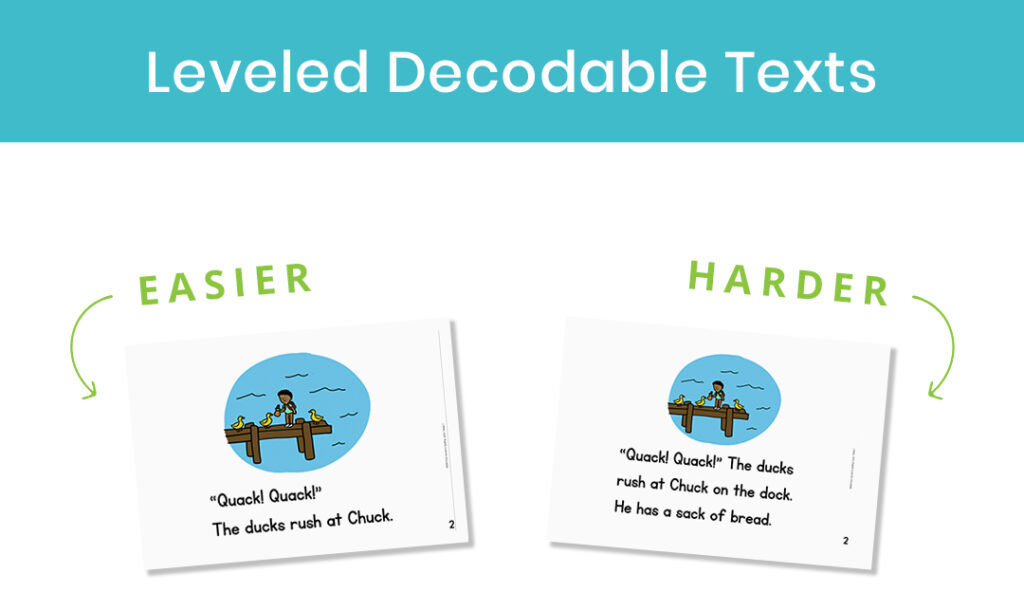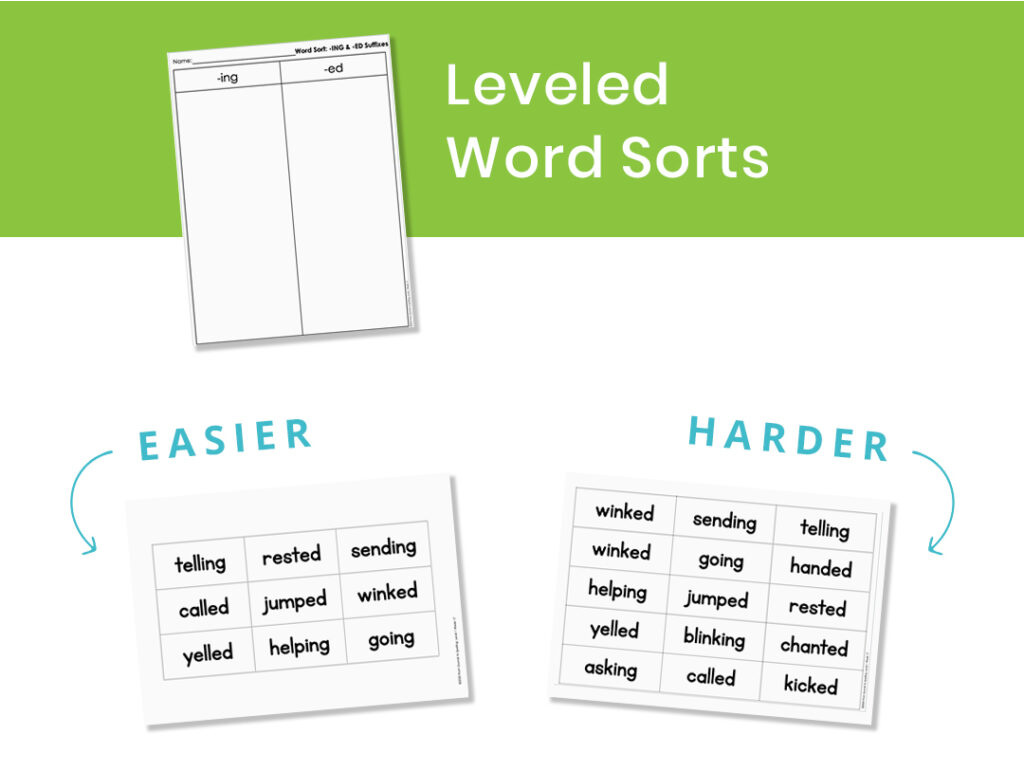
What All Phonics Programs Should Include
There are many different phonics programs used in schools. And they all differ slightly.
So how do you choose the best phonics programs? What should you look for?
Here's a list of characteristics that we believe (and the research supports) should be included in all phonics programs:
1. Systematic Phonics Instruction
Phonics instruction involves teaching students to make connections between letters and sounds for the purpose of reading and spelling words.
Systematic phonics instruction means that these letter-sound relationships are taught in an intentional order. To teach phonics systematically, you'll need to follow a phonics scope and sequence that reflects a developmentally appropriate sequence.
(To grab a free phonics scope and sequence pdf, sign up for a free trial of From Sounds to Spelling - no credit card required.)
Non-systematic (sometimes called "incidental") phonics instruction, on the other hand, might involve teaching letter-sound relationships as they arise. For example, if the pattern "igh" comes up in a text, the teacher might stop and teach that pattern to students.
While in-context phonics instruction like this can be helpful and necessary at times, it should not be the basis of phonics instruction. Following a systematic scope and sequence is important to teaching phonics in a coherent way, so students don't end up with phonics gaps.
The research shows that systematic phonics instruction leads to reading success, particularly when this type of instruction begins in Kindergarten or first grade.
2. Explicit Phonics Instruction
In explicit phonics instruction, students are directly taught relationships between letters and sounds.
For example, they learn that the /s/ sound can be represented by the letter s, or that the long e sound can be represented by the "ea" pattern.
Implicit phonics instruction is the opposite of explicit phonics instruction. In implicit phonics instruction, students must learn phonics patterns (like "ea") by reading whole words. This is a "whole to part" approach and doesn't involve the clear explanations given in explicit phonics instruction.
The National Reading Panel (2000)'s meta-analysis revealed that explicit (and systematic) phonics instruction leads to greater reading success than non-systematic, implicit phonics instruction.
3. Multisensory Phonics Activities
When you're teaching phonics to struggling readers, multisensory activities are a "must have!" However, multisensory activities are also beneficial and engaging for ALL learners, not just those with special needs!
So what are multisensory activities?
They're phonics activities that involve more than one of the senses. Here are some examples of multi-sensory phonics activities:
- Tracing a spelling pattern in sand and saying aloud the letters and sounds as you trace (i.e. "C-H says /ch/")
- Building words with magnetic letters or letter tiles, while saying the sounds of each letter
- Air-writing letters while saying their names and/or sounds
Multisensory activities can be a daily component of phonics instruction. They don't take long to implement and aren't expensive!
4. Materials for Differentiation
It's extraordinarily rare for all students in a classroom to be at the exact same level, especially when it comes to their phonics knowledge.
While many phonics programs provide "one size fits all" instruction, the best phonics programs include resources to allow teachers to differentiate and better meet students' needs.
For example, in the From Sounds to Spelling phonics program, teachers receive decodable readers at two different difficulty levels. This allows all students practice a certain phonics skill while reading text appropriate for their current abilities.

In From Sounds to Spelling, we also provide word sorts at different levels:

From Sounds to Spelling can be taught partially or completely in a small group setting, allowing for further differentiation. Videos inside the program login guide teachers in organizing their classrooms for differentiated instruction.
5. Phonics Assessments and Responsive Instruction
Some phonics programs have teachers start with Lesson 1 and cover exactly one lesson per day through the end of the school year.
While this may work fine for some classes, it's very possible that:
- Students need to review skills from the previous year, or
- Lesson 1 may be too easy for students at the beginning of the year, or
- Students may need extra help to master certain skills
For these reasons, effective phonics programs include assessments that allow the teacher to see where students are in their learning, as well as adjust the content or pacing of what they're teaching.
In From Sounds to Spelling, we provide a placement test for the beginning of the school year, assessments at the end of each unit, and quick weekly assessments so that teachers can monitor progress.
We also expect our teachers to adjust their pacing to meet students' needs; it's okay to spend longer than a week on a week's worth of materials, if necessary!
6. Professional Development & Guidance
As many teachers can attest, it's one thing to have a phonics program to use and another thing to fully understand how to use it well.
Many schools provide professional development when a phonics program is first adopted, but after that, teachers are left on their own.
What about teachers who join the school a year later? What about when a teacher simply forgets what was said during a training?
These reasons are why From Sounds to Spelling includes built-in professional development videos. Teachers can log in and access the videos anytime, anywhere. They have guidance in teaching the program, so that they can have the greatest impact possible on their students' learning!
Phonics Programs Samples
For 3 free weeks of phonics instruction (1 week each of Kindergarten, 1st grade, and 2nd grade), sign up to get a free trial of From Sounds to Spelling at this link.
No credit card is required, and you'll even get access to a phonics scope and sequence and basic placement test!
Our program includes all of the components mentioned in this article, making it easy for teachers to follow the research and deliver the best possible phonics and reading instruction.




